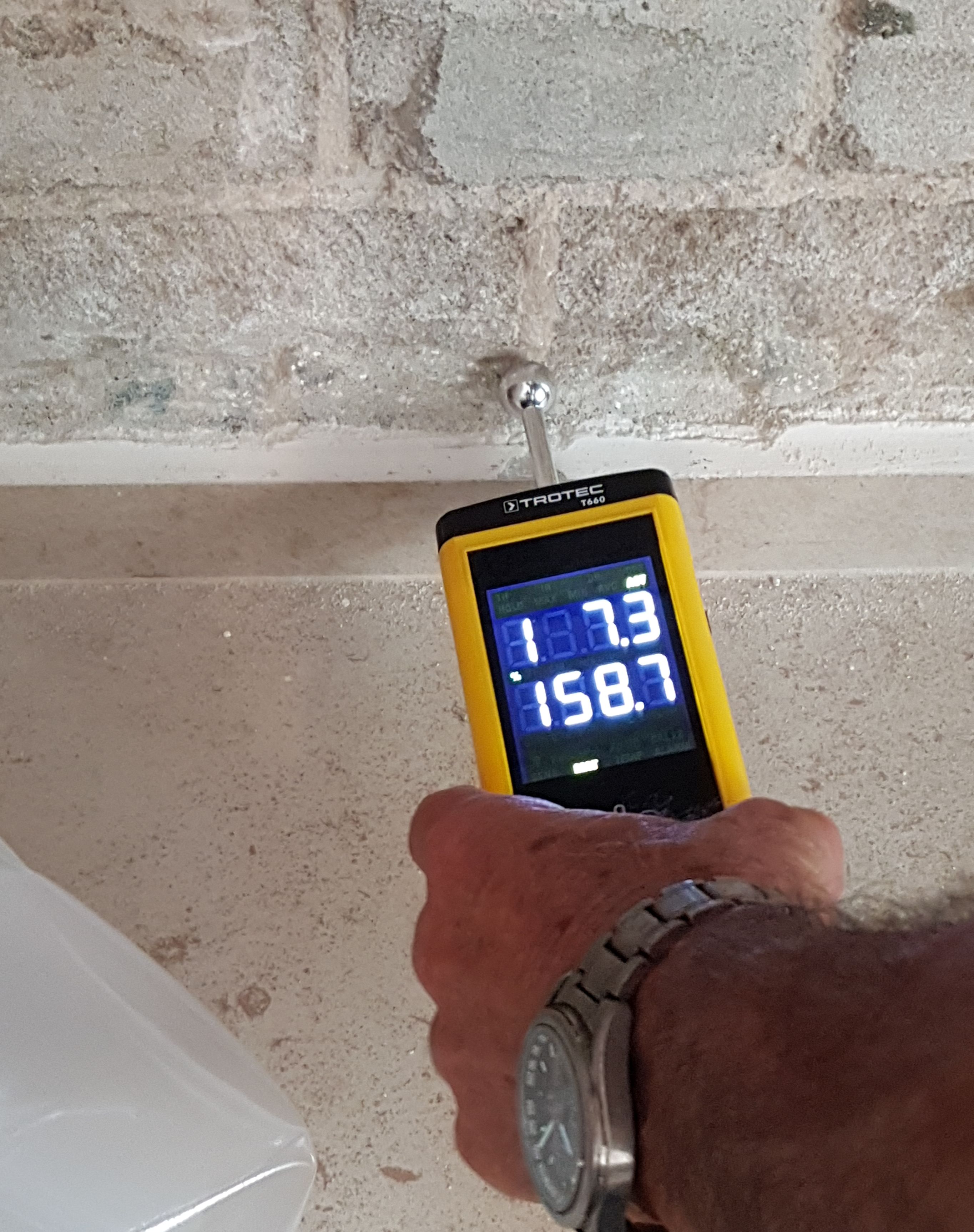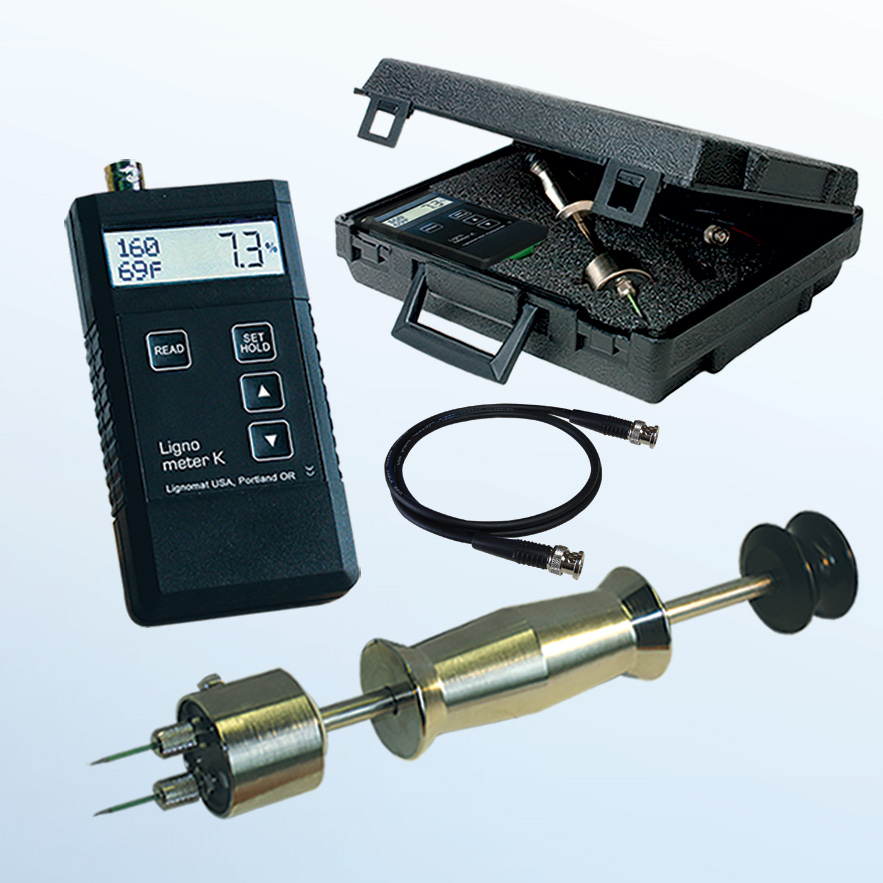The Science Behind Moisture Meters: Exactly How They Work and Why They're Vital
Look Into the Globe of Dampness Meters: Every Little Thing You Required to Know
In the realm of moisture meters exists a globe of accuracy and functionality that typically goes undetected. Comprehending how moisture meters run, the different kinds available, and their diverse uses can drop light on their significance in making certain high quality and efficiency.
Just How Moisture Meters Job
Moisture meters run by measuring the electric conductivity or capacitance of products to identify the dampness web content existing - Moisture Meter. These meters are invaluable devices across various sectors, including agriculture, building and construction, and woodworking. By using various methods such as pin-type or pinless modern technology, dampness meters offer accurate analyses that help experts make educated decisions
Pin-type wetness meters function by inserting the sharp pins into the product being evaluated. On the various other hand, pinless dampness meters use electromagnetic signals to check a bigger location without triggering any type of damages to the material's surface.
No matter of the approach made use of, wetness meters play a vital duty in preventing problems such as mold growth, structural damages, or product problems triggered by excess wetness. Comprehending how these meters work is necessary for making certain the top quality and stability of materials in various applications.
Kinds Of Dampness Meters
Given the crucial duty wetness meters play in various sectors, it is important to comprehend the different kinds available to specialists for precisely assessing dampness levels. There are largely two main sorts of moisture meters: pinless and pin-type wetness meters.
Pin-type moisture meters make use of two pins that are put into the product being evaluated to measure the electric resistance between them. This approach is commonly utilized for timber, drywall, and other building products. Pin-type meters offer specific readings at certain depths, making them suitable for determining dampness gradients.
On the various other hand, pinless dampness meters make use of electromagnetic sensing unit plates to scan a bigger location of the material without causing any damage. This kind is suitable for swiftly scanning huge areas and is frequently made use of for flooring, walls, and ceilings. Pinless meters are practical for taking readings on finished surface areas without leaving any type of noticeable marks.
Both sorts of wetness meters have their benefits and are picked based on the particular needs of the job at hand. Comprehending the distinctions between these types is essential for experts to make exact dampness assessments.
Applications Throughout Industries
With varied functionalities, dampness meters find prevalent application throughout numerous industries, aiding professionals in guaranteeing ideal problems for structures and materials. In the agriculture market, dampness meters are invaluable for identifying the moisture content in grains, seeds, and hay, guaranteeing high quality control and stopping mold growth. Building experts rely upon dampness meters to analyze the dampness degrees in structure materials like drywall, concrete, and timber, which is vital for keeping structural integrity and preventing issues like rot or mold and mildew. The floor covering market utilizes you can try here moisture meters to gauge the dampness material in subfloors before setting up numerous flooring coverings, stopping expensive problems due to excess wetness. In the food sector, moisture meters are utilized to monitor and manage moisture levels in items such as grains, nuts, and dried fruits to preserve freshness and top quality. In addition, wetness meters play an important role in the remediation and damages assessment market by aiding professionals resolve and recognize water damages in structures quickly. Across these diverse markets, wetness meters are indispensable devices for ensuring the top quality, security, and durability of numerous materials and products.
Tips for Using Dampness Meters
Make use of the dampness meter's pop over here calibration settings to guarantee precise analyses when determining the dampness content in various products. Calibration is important for the proper performance of a dampness meter. Prior to each usage, it is recommended to check and adjust the calibration settings according to the particular material being tested. Additionally, make certain the meter is set to the appropriate wetness variety for the product you are measuring to get one of the most exact results.

When making use of a pin-type moisture meter, put the pins to the ideal depth advised for the material being checked. This makes sure that the dampness analyses are extracted from the right depth within the product, supplying a more exact representation of its wetness material. For pinless wetness meters, remember to preserve appropriate call with the product's surface to get trustworthy readings.

On a regular basis examine and change the batteries in your wetness meter to avoid imprecise analyses due to low power. Store the meter in a dry and safe place when not in use to lengthen its life expectancy and maintain its accuracy. By following these pointers, you can optimize the performance of your moisture meter and obtain exact dampness web content measurements throughout different products.

Maintenance and Calibration
To make sure the precision of dampness web content dimensions, regular upkeep and calibration of the moisture meter are crucial steps in its proper functioning. Calibration adjusts the moisture meter to guarantee that it supplies consistent and reputable results.
Calibration needs to be done occasionally, specifically if the wetness meter is utilized often or in crucial applications where accurate dimensions are called for. Several dampness meters include calibration tools or can be adjusted by specialist services - Moisture Meter. It is suggested to keep a log of calibration days and results to track the efficiency of the dampness meter gradually. By keeping and calibrating the dampness meter frequently, individuals can trust the precision of the wetness content measurements obtained.
Conclusion
Finally, wetness meters play a Visit This Link vital function in various sectors by accurately gauging the wetness content of products. Comprehending just how these gadgets work, the various types readily available, and appropriate maintenance and calibration are necessary for acquiring reliable outcomes. Whether in farming, building and construction, or production, the use of moisture meters assists make sure quality assurance and performance in processes.
Building and construction professionals count on moisture meters to examine the dampness levels in building products like wood, drywall, and concrete, which is vital for maintaining structural stability and protecting against issues like rot or mold and mildew. The floor covering industry utilizes wetness meters to gauge the dampness content in subfloors before setting up numerous flooring coverings, avoiding expensive problems due to excess dampness.Make use of the wetness meter's calibration settings to make certain precise analyses when determining the moisture material in various products. By following these suggestions, you can maximize the performance of your moisture meter and obtain accurate moisture material dimensions across various materials.
In final thought, moisture meters play a critical role in numerous industries by precisely measuring the moisture content of products.